The plains zebra, commonly known as the common zebra, is the most numerous of three zebra species found in eastern and southern Africa’s grasslands. Grevy’s zebras and mountain zebras are the other two species. The zebra’s black and white stripes make it one of the most identifiable animals on the planet.
Plains zebras are often smaller than the other two zebra species. They may reach heights of 1-1.5 m (3.5-5 ft.) and weigh almost 450 kg (1000 lbs.). Plains zebras have a distinct stripe pattern from the other kinds. They have broad stripes that run horizontally towards the rear and vertically towards the front, meeting in the centre of their bodies to form a triangle.
Step into the grassy plains of Africa and behold the stunning beauty of the Plains Zebra (Equus quagga). With its distinctive black and white stripes, this iconic creature has become synonymous with the African savannah.
Plains Zebra: Species Profile
COMMON NAME: Plains Zebra
SWAHILI NAME: Punda Milia
SCIENTIFIC NAME: Equus quagga
TYPE: Mammal
FOOD: Plains Zebras are herbivores and primarily graze on grasses. They have adapted to feed on a variety of grass species found in their habitats. They also browse on leaves, shoots, and bark from select trees and shrubs when grass is scarce.
HABITAT: Plains Zebras are native to the grasslands, savannahs, and open woodlands of eastern and southern Africa. They have a wide distribution across countries such as Kenya, Tanzania, Botswana, South Africa, and others. They are well adapted to a range of habitats, including both arid and more humid environments.
SIZE: Plains Zebras are medium-sized ungulates. They typically have a shoulder height of about 1.2 to 1.4 meters (3.9 to 4.6 feet) and a body length of around 2.3 to 2.6 meters (7.5 to 8.5 feet). Adult zebras can weigh between 220 to 350 kilograms (485 to 770 pounds), with males being slightly larger than females.
AVERAGE LIFE SPAN IN THE NATURAL HABITAT: In the wild, Plains Zebras have an average lifespan of around 20 to 25 years. However, this can vary depending on factors such as predation, disease, and availability of food and water.
ACTIVE: Plains Zebras are diurnal animals, meaning they are primarily active during the day. They spend much of their time grazing on grasses and moving in large herds. They are social animals and live in groups called “harems,” consisting of one dominant male (stallion), several females (mares), and their offspring.
GESTATION PERIOD: The gestation period for Plains Zebras is approximately 12 to 13 months. Female zebras give birth to a single foal, which can stand and walk shortly after birth. The foal remains close to its mother and receives milk for several months before transitioning to solid food.
WEIGHT: Adult Plains Zebras can weigh between 200 to 450 kilograms (440 to 990 pounds). Male zebras are generally larger and heavier than females. They have a sturdy build with distinctive black and white striped coats, which provide camouflage and help deter biting flies and parasites.
SIZE COMPARISON TO A 6-FT MAN: Plains Zebras are similar in height to a 6-ft man, with a shoulder height of about 1.2 to 1.4 meters (3.9 to 4.6 feet). However, they are longer in body length, measuring around 2.3 to 2.6 meters (7.5 to 8.5 feet) from head to tail. Their size, combined with their unique striped pattern, makes them easily recognizable and one of the most iconic African animals.
Striking Physical Features:
The Plains Zebra (Equus quagga) is a remarkable and iconic species known for its distinctive black and white striped coat. These beautiful animals have several physical characteristics that distinguish them from other species of zebras. Here are some key features of the Plains Zebra’s appearance:
Coat: The most recognizable feature of the Plains Zebra is its coat pattern. Their body is covered with bold, contrasting black and white stripes that run vertically from the head to the tail. The patterns of the stripes vary among individuals, with some having broader stripes and others having narrower ones. The unique coat serves as camouflage, making it difficult for predators to single out an individual zebra from a distance.
Size and Shape: Plains Zebras are medium-sized members of the equine family. On average, they measure around 1.2 to 1.4 meters (4 to 4.6 feet) tall at the shoulder and have a body length of about 2 to 2.5 meters (6.6 to 8.2 feet). They possess a robust and compact build, with strong legs adapted for running across the savannahs.
Head: The head of a Plains Zebra is relatively large, with a distinctive muzzle that ends in a round, black nose. Their eyes are located on the sides of the head, providing a wide field of vision to detect potential threats. Above their eyes, zebras have short, erect ears that can swivel independently to listen for sounds in different directions.
Mane: Along the neck and back of a Plains Zebra, a tufted mane extends from the base of the head to the withers. The mane consists of coarse, erect hair and is predominantly black in color. In males, the mane may appear more pronounced and thicker than in females.
Tail: The tail of a Plains Zebra is long, slender, and tipped with a tuft of black hair. Zebras use their tails to swat away biting insects, such as flies and mosquitoes, providing some relief from irritation.
Hooves: Like other members of the equine family, Plains Zebras have hooves that are well-adapted for their grassland habitat. Their hooves are hard, durable, and divided into two parts, enabling them to traverse diverse terrain with ease.
It’s important to note that while the black and white stripes of Plains Zebras are their most recognizable feature, scientists are still studying the exact purpose and advantages of this unique coat pattern. Some theories suggest that the stripes may play a role in social communication, thermoregulation, or protection against biting insects.
The striking appearance of Plains Zebras makes them a favorite subject for wildlife enthusiasts, photographers, and artists. Their distinct black and white stripes add a sense of elegance and charm to the African savannahs where they roam.
A. Unique Striping Pattern:
The Plains Zebra is renowned for its bold black and white stripes, which vary in thickness and arrangement among individuals. This eye-catching pattern serves as both camouflage and a social identifier, allowing zebras to blend into their surroundings while also distinguishing one another within a herd.
B. Robust Build:
Zebras are sturdy animals, with a compact body and strong legs built for endurance. They have adapted to withstand the challenging conditions of their habitat, from traversing long distances in search of food and water to defending against predators.
Habitat and Range:
A. Wide-ranging Distribution:
Plains Zebras are found in various grassland and woodland habitats across sub-Saharan Africa. They have adapted to diverse environments, including savannahs, open plains, and even mountainous regions. Their ability to thrive in different ecosystems highlights their resilience and adaptability.
B. Herd Life:
Plains Zebras are social animals, typically forming large herds consisting of several individuals. These herds provide protection against predators, enhance foraging efficiency, and foster social bonds through grooming and communication.
Behavior and Communication:
The Plains Zebra (Equus quagga) is a fascinating species known for its social nature and unique behaviors. These magnificent animals exhibit a range of behaviors that allow them to thrive in their grassland habitats. Here are some key aspects of Plains Zebra behavior:
Social Structure: Plains Zebras are highly social animals and live in family groups known as harems. A harem typically consists of one dominant male, called a stallion, several females, and their offspring. The stallion plays a vital role in protecting the harem and maintaining order within the group. Female zebras often stay with the same harem for extended periods, forming strong social bonds.
Communication: Zebras communicate through a variety of vocalizations, body language, and facial expressions. They use different vocal calls, such as barks, whinnies, and brays, to convey messages to other members of their group. Ears positioned forward or backward, bared teeth, and lowered heads are all forms of body language that zebras employ to communicate their intentions and emotions.
Vigilance and Alertness: Living in open grasslands where predators lurk, Plains Zebras have developed a keen sense of vigilance. While grazing, they remain watchful and take turns standing guard, scanning the surroundings for potential threats. Their black and white stripes also serve as a form of visual confusion, making it harder for predators to single out an individual zebra from a distance.
Migration and Grazing: Plains Zebras are herbivores and feed primarily on grasses. They have adapted to grazing on both short and long grasses, allowing them to take advantage of varying food sources. In search of fresh grazing areas and water, zebras may undertake seasonal migrations, moving in large herds across vast distances.
Water Dependencies: Like other animals, Plains Zebras rely on water sources for survival. They need to drink water regularly, and therefore, their movement patterns are often influenced by the availability of water. During the dry season, zebras may congregate around watering holes, sharing these vital resources with other herbivores.
Mobility and Speed: Plains Zebras are agile runners and can reach impressive speeds when necessary. In the presence of danger, they can gallop at speeds of up to 64 kilometers per hour (40 miles per hour) to evade predators. Their swift movements and herd dynamics help in confusing and deterring potential threats.
Mating and Reproduction: Breeding among Plains Zebras typically occurs within the harem structure. The dominant stallion mates with the females in his group, ensuring the survival and continuation of his genetic lineage. After a gestation period of around 12 to 13 months, a female zebra gives birth to a single foal. The foal is able to stand and walk within a short period and soon joins the harem.
Observing the behavior of Plains Zebras in their natural habitat is a remarkable experience. Their social interactions, protective strategies, and synchronized movements within a herd highlight the intricacies of their behavior. By studying and appreciating these behaviors, we gain a deeper understanding of the fascinating world of the Plains Zebra.
A. Vocalizations:
Zebras employ various vocalizations to communicate within their herd, including braying, snorting, and barking. These vocal signals convey messages of alarm, dominance, and territorial boundaries, facilitating social cohesion and coordination.
B. Striking Displays:
When faced with potential threats, zebras exhibit impressive defensive behaviors. They may engage in group formations, displaying a unified front by standing close together and kicking out with their powerful legs, deterring predators with their strength in numbers.
Diet and Foraging:
A. Selective Herbivores:
Plains Zebras are herbivores with a primarily vegetarian diet. They graze on a variety of grasses, herbs, and leaves, utilizing their large, grinding teeth to consume fibrous plant material. Their feeding habits play a crucial role in shaping the vegetation structure and maintaining the balance of their ecosystem.
Conservation Status and Threats:
A. Conservation Efforts:
The Plains Zebra is currently classified as a species of Least Concern on the International Union for Conservation of Nature (IUCN) Red List. However, increasing human activities, such as habitat loss, poaching, and competition with livestock, pose threats to their populations.
Conservation Initiatives:
Numerous conservation organizations and national parks are working tirelessly to protect the Plains Zebra and its habitat. Efforts include anti-poaching measures, community-based conservation programs, and the establishment of protected areas to ensure the long-term survival of this remarkable species.
Equus quagga
The Equus quagga (Plains Zebra) stands as a symbol of the African wilderness, captivating us with its striking appearance and captivating behaviors. By appreciating and safeguarding these magnificent creatures, we contribute to the preservation of the intricate web of life in the African savannah. Let us celebrate the Plains Zebra’s beauty, resilience, and vital role in maintaining the delicate balance of our planet’s ecosystems.
Plains Zebra Adaptations
The Plains Zebra (Equus quagga) has evolved several remarkable adaptations that allow it to thrive in its grassland habitats. These adaptations help them survive in the challenging and dynamic environments they inhabit. Here are some key adaptations of the Plains Zebra:
Striped Coat: The most distinctive adaptation of the Plains Zebra is its black and white striped coat. While the exact purpose of these stripes is still debated among scientists, several theories exist. One prominent theory suggests that the stripes act as a form of camouflage, making it difficult for predators, such as lions or hyenas, to single out an individual zebra from a distance. The stripes may also help to confuse biting insects and minimize their impact on zebras.
Social Structure: Plains Zebras have developed a social structure that benefits their survival. Living in family groups called harems, zebras exhibit cooperative behaviors that enhance their collective defense against predators. By living in large herds, zebras increase their chances of detecting predators early and effectively repelling them. The social structure also promotes cooperative vigilance and allows for the sharing of valuable resources, such as food and water.
Digestive System: As herbivores, Plains Zebras have adapted their digestive systems to efficiently process plant material. They have a specialized digestive system with a large cecum, which is a fermentation chamber in their intestines. The cecum contains microorganisms that help break down the tough and fibrous grasses they consume, allowing them to extract maximum nutrition from their diet.
Running Ability: Plains Zebras are well-adapted for a life on the open grasslands, where speed and agility are crucial for survival. They have long legs and a lean body structure, enabling them to run swiftly. Zebras can reach speeds of up to 64 kilometers per hour (40 miles per hour), making it challenging for predators to catch them. Their strong leg muscles and robust cardiovascular system support their running capabilities.
Alertness and Vision: Living in an environment with various potential threats, Plains Zebras have developed keen senses to detect danger. They have excellent eyesight, with eyes positioned on the sides of their head, providing a wide field of vision. This allows them to detect predators even from different angles. Zebras also have large, mobile ears that can rotate independently, helping them pinpoint sounds and potential threats.
Water Dependency: Plains Zebras have adapted to their water-dependent habitats. They can quickly detect the scent of water and have the ability to locate water sources even from great distances. They are well-adapted to consume large quantities of water when it is available, enabling them to survive in environments where water availability fluctuates.
Kick Defense: When faced with a predator, Plains Zebras can defend themselves with powerful kicks. Their strong and muscular hind legs are formidable weapons that can deliver swift and forceful kicks, potentially injuring or repelling predators.
These adaptations have allowed the Plains Zebra to thrive in the grasslands of Africa. Their striped coat, social structure, specialized digestion, running ability, alertness, water dependency, and defensive kicks all contribute to their survival in their dynamic and often challenging environment.
Where to See Plains Zebras in Tanzania
Tanzania is blessed with abundant wildlife and diverse ecosystems, making it a fantastic destination for wildlife enthusiasts and safari lovers. If you’re eager to witness the majestic Plains Zebras (Equus quagga) in their natural habitat, there are several national parks and conservation areas in Tanzania where you can have incredible zebra sightings. Here are some of the best places to see Plains Zebras in Tanzania:
Serengeti National Park:
Serengeti is undoubtedly one of the most famous and iconic national parks in Africa. Known for its stunning landscapes and incredible wildlife, this vast savannah ecosystem provides an ideal habitat for Plains Zebras. The Serengeti is home to large herds of zebras that migrate in search of fresh grazing areas, offering a remarkable opportunity to witness their impressive numbers and dynamic behavior.
Ngorongoro Crater:
The Ngorongoro Crater, a UNESCO World Heritage Site, is a unique and breathtaking location to observe wildlife, including Plains Zebras. The crater’s diverse ecosystem, which includes grasslands, woodlands, and a permanent water source, attracts a wide range of animals, including zebras. The expansive grassy plains within the crater provide excellent grazing opportunities for these beautiful creatures.
Tarangire National Park:
Tarangire National Park is renowned for its large elephant populations, but it is also a haven for zebras. With its varied landscapes of grasslands, riverine forests, and baobab-studded plains, Tarangire offers a picturesque setting to encounter Plains Zebras. The park’s permanent water sources, such as the Tarangire River, act as natural magnets for wildlife, including zebras.
Lake Manyara National Park:
Located at the base of the Great Rift Valley, Lake Manyara National Park offers a unique zebra-watching experience. The park is famous for its diverse birdlife and tree-climbing lions, but it is also home to herds of Plains Zebras. The open grassy plains near the lake attract zebras, providing visitors with excellent opportunities to observe their behavior and interactions.
Ruaha National Park:
Ruaha National Park, located in southern Tanzania, is the largest national park in the country and offers a more off-the-beaten-path zebra viewing experience. The park’s vast wilderness and diverse habitats, including savannahs, woodlands, and river systems, provide a rich environment for zebras to thrive. Exploring the park’s expansive landscapes will likely reward you with encounters with these magnificent animals.
Remember that wildlife sightings can vary depending on the season, migration patterns, and the animals’ natural behaviors. It is advisable to consult with local safari guides or tour operators who have extensive knowledge of the best locations and timing for zebra sightings in Tanzania. Their expertise can greatly enhance your chances of witnessing the beauty of Plains Zebras in their natural habitat.
So, pack your binoculars, camera, and a sense of adventure, and head to Tanzania to witness the awe-inspiring Plains Zebras in their wild and untamed splendor.
Plains Zebra Safari Tips
Embarking on a safari to witness the magnificent Plains Zebras (Equus quagga) in their natural habitat is an exciting adventure. To make the most of your zebra safari experience in Tanzania, here are some helpful tips to keep in mind:
1. Choose the Right Time: The timing of your safari can greatly impact your zebra sightings. The dry season (from June to October) is generally a favorable time to observe zebras as they gather around water sources and engage in migration patterns. During this period, the chances of encountering large herds of zebras are higher.
2. Seek Expert Guidance: Hiring a knowledgeable safari guide or joining a reputable tour operator specializing in wildlife safaris is highly recommended. Their expertise and experience in navigating the national parks and conservation areas can greatly enhance your chances of finding and observing Plains Zebras in their natural environment.
3. Be Patient and Observant: Wildlife encounters require patience and keen observation. Zebras can sometimes blend into the grassy savannah, so keep a close eye on your surroundings. Scan the horizon, watch for movement, and pay attention to any signs of zebra presence, such as dust clouds or grazing behavior.
4. Use Binoculars and Photography Equipment: Zebras are often spotted at a distance, so having a pair of binoculars can help you observe their behavior and appreciate their unique features up close. Additionally, if you enjoy wildlife photography, bring along a telephoto lens to capture stunning images of zebras in their natural habitat.
5. Respect Wildlife and Maintain Distance: When encountering Plains Zebras or any other wildlife during your safari, it’s crucial to respect their space and observe them from a safe distance. Maintain a respectful distance to avoid causing stress or disturbance to the animals. Remember, you are a guest in their home, and minimizing human impact is vital for their well-being.
6. Observe Zebra Behavior: Take the time to watch and learn about zebra behavior. Observing their social interactions, grazing patterns, and movements within a herd can provide valuable insights into their fascinating lives. Look out for interactions between zebras and other wildlife species, as these can often create unique and memorable wildlife encounters.
7. Enjoy the Surrounding Wildlife: While zebras may be the main focus of your safari, don’t forget to appreciate the rich diversity of other wildlife species that coexist with them. Tanzania is home to a remarkable array of animals, including lions, elephants, giraffes, and numerous bird species. Embrace the opportunity to witness the interconnectedness of these ecosystems.
8. Stay Safe and Follow Park Regulations: Always prioritize your safety during the safari. Follow the guidance of your safari guide and adhere to the park regulations and guidelines provided by the authorities. This ensures a safe and responsible wildlife viewing experience for everyone involved, including the animals.
By keeping these tips in mind, you can enhance your Plains Zebra safari experience and create lasting memories of these stunning creatures in their natural habitat. Cherish the opportunity to witness the beauty of zebras in the wild and savor every moment of your safari adventure in Tanzania.
Plains Zebra Frequently Asked Questions
Q: What is the scientific name of the Plains Zebra?
A: The scientific name of the Plains Zebra is Equus quagga.
Q: Where can Plains Zebras be found?
A: Plains Zebras are native to the grasslands and savannahs of eastern and southern Africa. They can be found in countries such as Tanzania, Kenya, South Africa, Botswana, and Zimbabwe.
Q: What do Plains Zebras eat?
A: Plains Zebras are herbivores and primarily feed on grasses. They have adapted to consume a variety of grass species, including both short and long grasses.
Q: Why do Plains Zebras have stripes?
A: The exact purpose of zebra stripes is still debated among scientists. One theory suggests that the stripes act as a form of camouflage, making it difficult for predators to single out an individual zebra from a distance. The stripes may also help to confuse biting insects and minimize their impact on zebras.
Q: Are Plains Zebras social animals?
A: Yes, Plains Zebras are highly social animals. They live in family groups called harems, consisting of a dominant male (stallion), several females, and their offspring. These groups often come together to form larger herds.
Q: Do Plains Zebras migrate?
A: Yes, Plains Zebras are known for their seasonal migrations in search of fresh grazing areas and water sources. They undertake long-distance movements, particularly in response to changes in food availability and rainfall patterns.
Q: What are the predators of Plains Zebras?
A: The main predators of Plains Zebras include lions, hyenas, leopards, cheetahs, and wild dogs. These predators rely on their hunting skills to capture zebras, particularly targeting the young or weak individuals.
Q: How fast can Plains Zebras run?
A: Plains Zebras are swift runners and can reach speeds of up to 64 kilometers per hour (40 miles per hour). Their running ability helps them evade predators and navigate their grassland habitats effectively.
Q: Do Plains Zebras have any conservation status?
A: Plains Zebras are currently classified as a species of “Least Concern” by the International Union for Conservation of Nature (IUCN). However, certain subspecies and populations may face localized threats and conservation challenges.
Q: Are Plains Zebras endangered?
A: While Plains Zebras as a species are not endangered, some subspecies, such as the Cape Mountain Zebra and the Grevy’s Zebra, are classified as endangered or critically endangered due to habitat loss, hunting, and other factors.
These are some frequently asked questions about Plains Zebras. These iconic African animals with their distinctive black and white stripes continue to captivate people’s curiosity and admiration. By understanding more about them, we can appreciate their unique adaptations and the challenges they face in their natural environment.

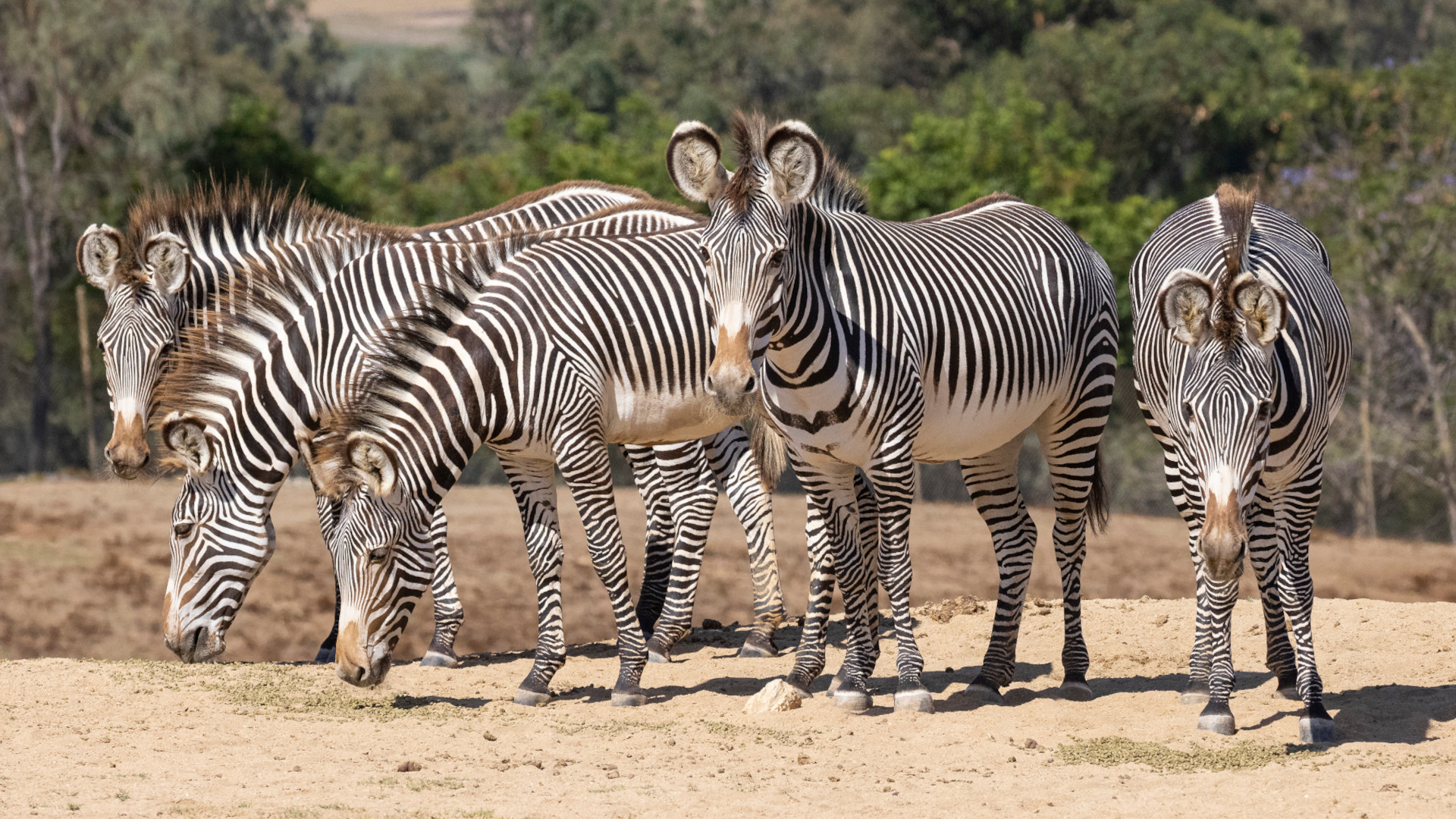
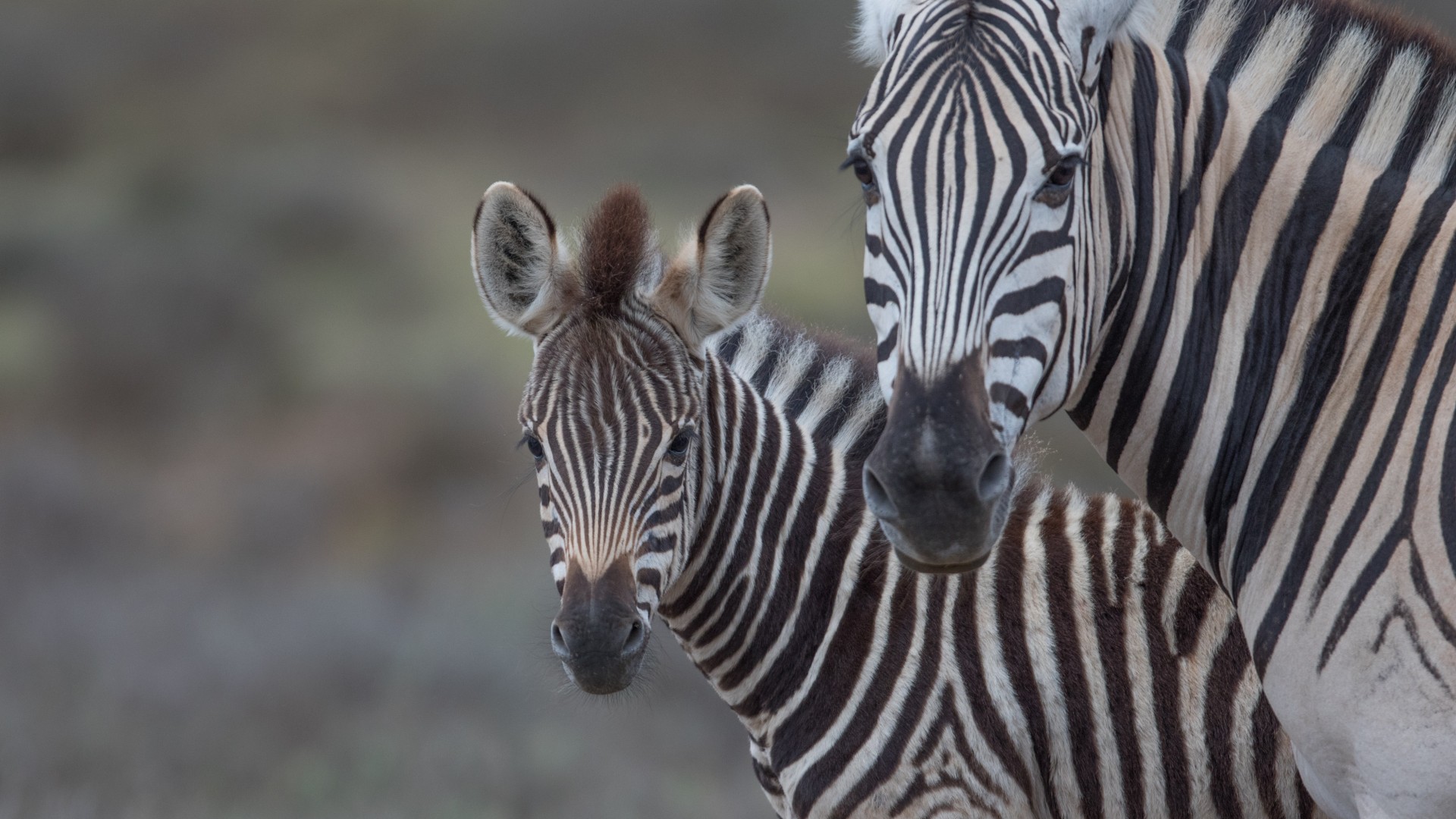
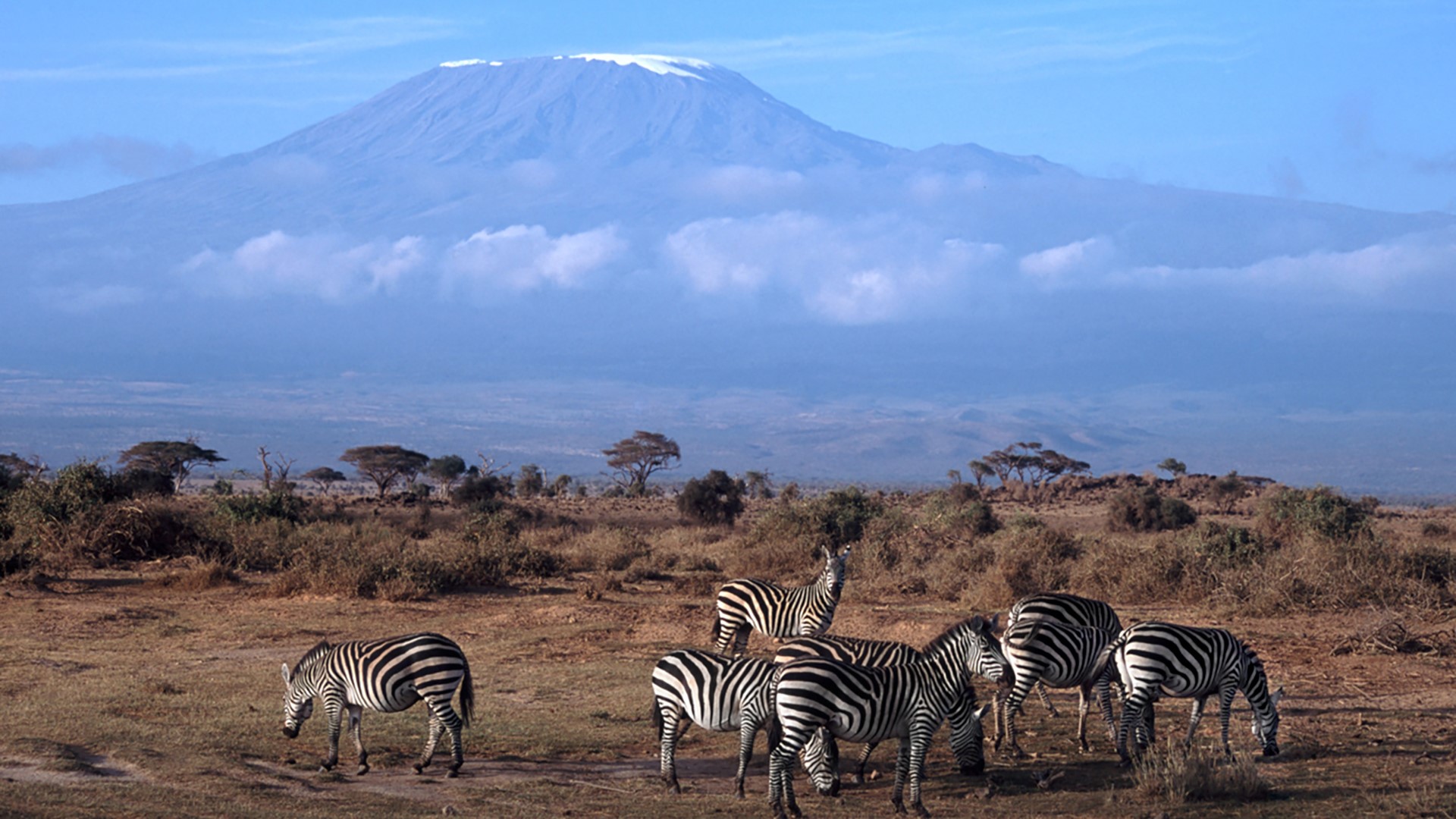
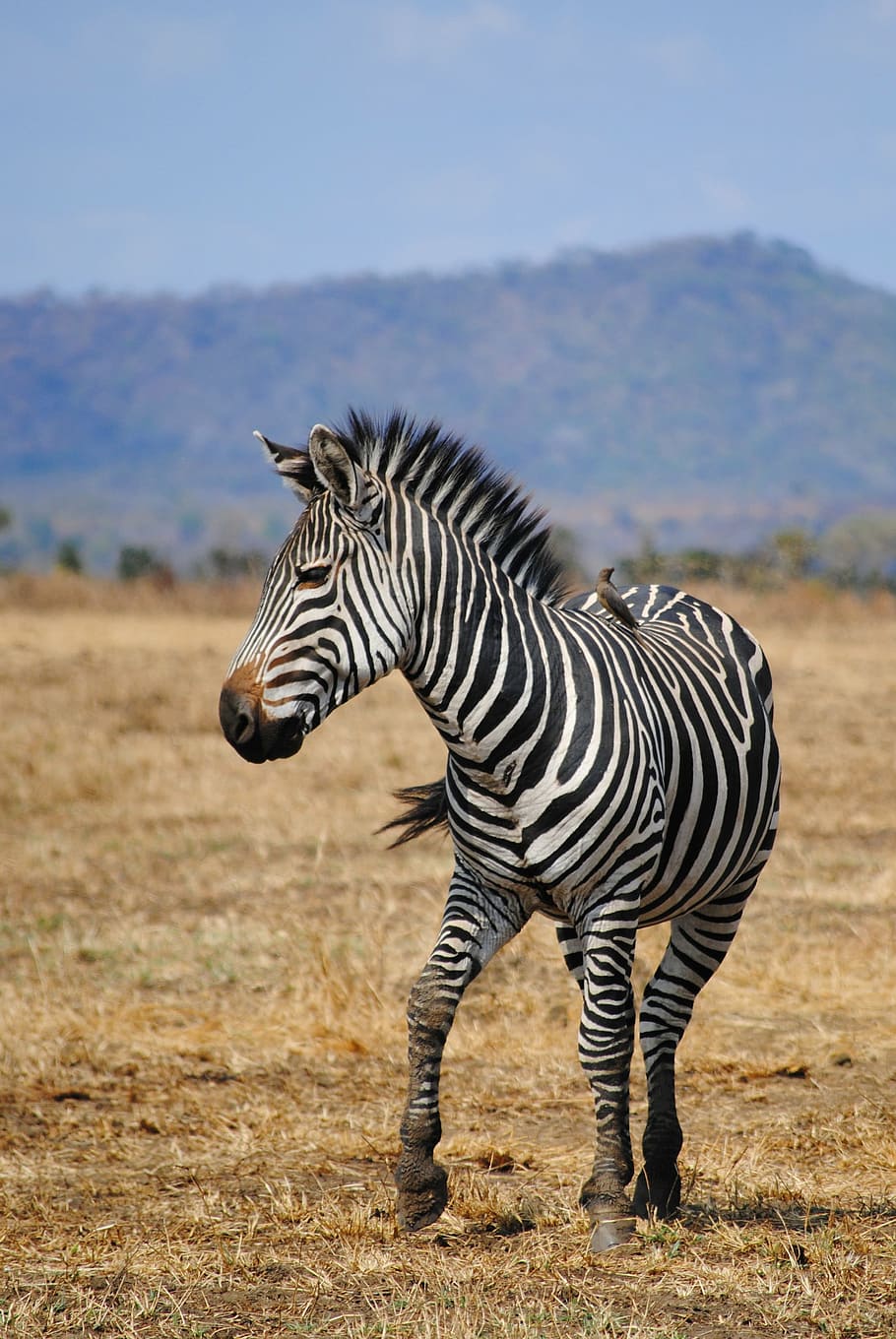
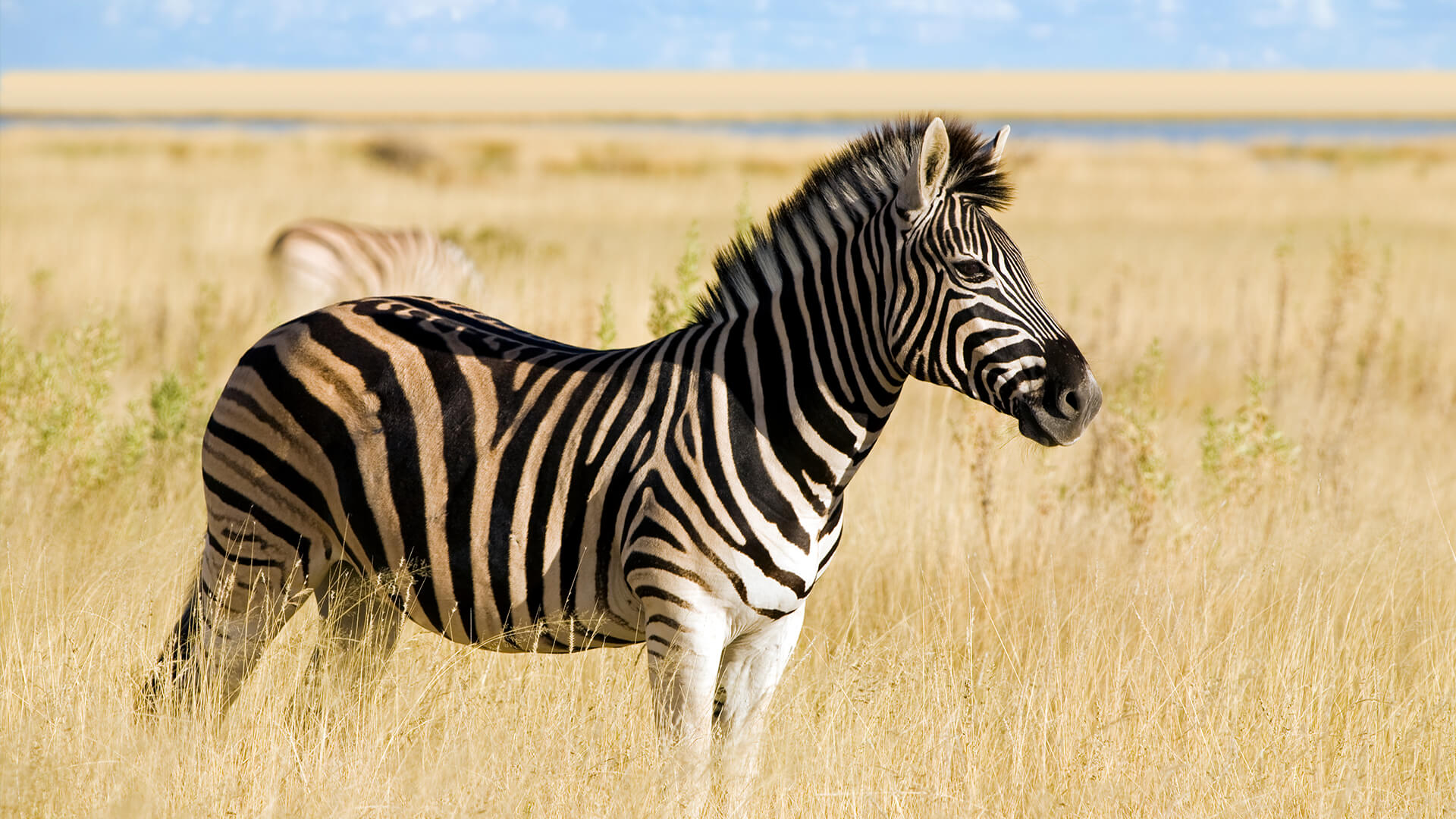
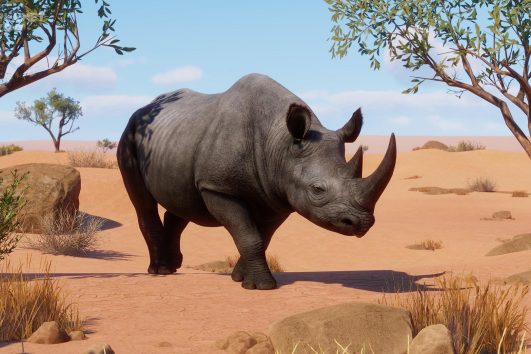
Tour Reviews
There are no reviews yet.
Leave a Review